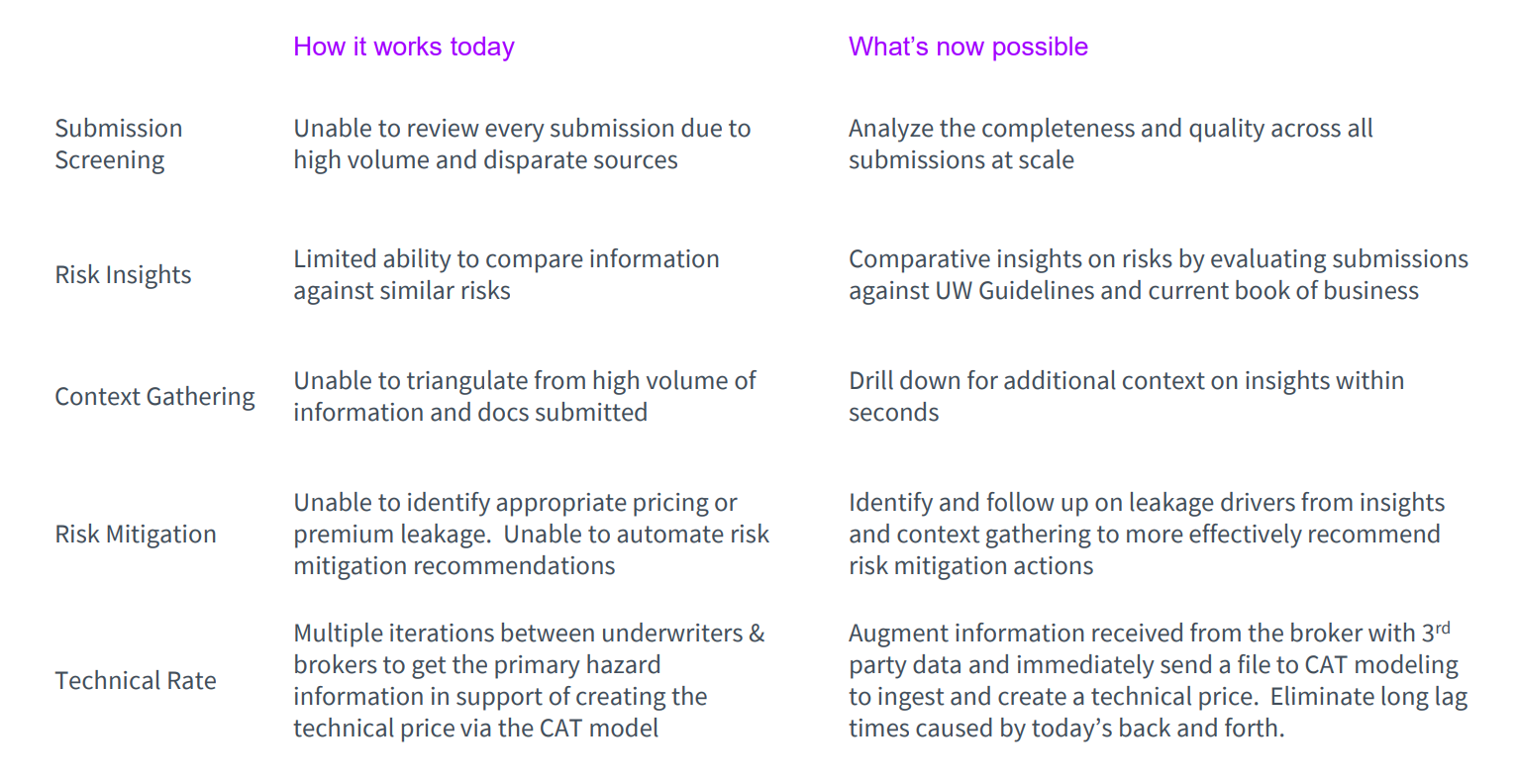As artificial intelligence becomes integral to business operations across industries, companies face new and evolving risks that traditional insurance policies weren’t designed to address. Artificial intelligence insurance provides specialized coverage for the unique exposures that arise from developing, deploying, and using AI technologies.
But, what is Artificial Intelligence Insurance? Is it a singular policy? Included in another? How does it work, and how do businesses get it?
This comprehensive guide explores everything you need to know about AI insurance, from understanding coverage needs to finding the right protection for your business.
Understanding Artificial Intelligence Insurance
Artificial intelligence insurance is specialized coverage designed to protect businesses against risks specific to AI technologies. However, this coverage, as of today, generally sits within a Technology Errors & Omissions Insurance (Tech E&O) policy as what’s called an “Endorsement.” You can read more about what insurance endorsements are in this article from us here at Embroker.
As artificial intelligence has taken over many industries, and grown into its own very lucrative one, insurance providers have worked diligently to adequately cover businesses that both utilize and build AI. Generally speaking, this looked like a Tech E&O policy that was intentionally vague in order to capture as many potential risk scenarios and definitions as possible.
However, that style of coverage has proven to be largely insufficient. Specific AI insurance endorsements address the unique challenges that arise when algorithms make decisions, process data, or interact with customers, rather than relying on broad definitions and circumstances.
What does it mean to “insure AI?”
Insuring AI through a Tech E&O policy means protecting your business against:
- Algorithmic errors that cause financial losses
- Discriminatory AI outputs that violate regulations
- Data breaches involving AI training datasets
- Professional liability for AI-powered services
- Regulatory investigations into AI practices
- Third-party claims arising from AI decisions
Why companies creating with AI need insurance
Unique risks for AI developers
Companies that build AI products or services face distinct liability exposures that many insurance policies often don’t address adequately.
Algorithm discrimination risks
One of the most significant exposures for AI developers involves algorithmic bias and discrimination. AI models trained on historical data can perpetuate or amplify existing biases, leading to discriminatory outcomes that violate employment, lending, or consumer protection laws.
For example, an AI hiring platform might systematically screen out qualified candidates from certain demographic groups, resulting in costly discrimination lawsuits and regulatory investigations. Except, this isn’t an example. This happened to Amazon in 2018.
Similarly, AI-powered lending platforms have faced scrutiny for unfairly denying loans to protected classes, while healthcare AI systems may provide unequal treatment recommendations based on biased training data.
Professional liability exposures
AI development companies face substantial professional liability risks when their products or services fail to meet client expectations or cause financial harm. This includes AI consulting services that don’t deliver promised results, machine learning models that underperform in real-world applications, or AI integration projects that cause system failures at client organizations.
When an AI recommendation engine provides faulty suggestions that cost a client millions in lost revenue, or when a predictive analytics platform fails to identify critical business risks, the resulting professional liability claims can be substantial.
This also actually occurred. This time, to Workday in the first half of 2025.
Intellectual property claims
The AI development process creates multiple intellectual property exposure points. Training AI models often involves processing vast amounts of data that may include copyrighted content, leading to infringement claims. Patent disputes over AI algorithms and methodologies are becoming increasingly common as the technology matures. Additionally, AI companies may face trade secret theft allegations when former employees join competitors, or trademark violations when AI systems generate content that infringes on existing marks.
To help you understand the scope of this issue, Wired has been tracking AI copyright infringement lawsuits in the US since December of 2024.
Regulatory investigation costs
As AI regulation intensifies globally, companies developing AI face increasing scrutiny from regulatory bodies. The Federal Trade Commission has ramped up investigations into AI marketing practices and algorithmic accountability via their Artificial Intelligence Compliance Plan. State-level agencies are developing AI-specific compliance requirements, while international regulators, particularly under the EU AI Act, are creating comprehensive oversight frameworks. These investigations can result in significant defense costs, fines, and operational disruptions, even when companies ultimately prevail.
Essential Coverage for AI Creators
Technology Errors & Omissions Insurance forms the foundation of protection for AI developers, covering professional liability claims arising from AI services that fail to meet expectations. This coverage protects against allegations of inadequate AI performance, errors in AI consulting and implementation, and failure to deliver promised AI capabilities.
AI Coverage That’s Built to Last
Embroker’s AI insurance coverage is clear, protects tech companies against real risks, and is built for the way businesses actually use AI.
Product Liability Coverage becomes essential for companies selling AI software or embedding AI capabilities in physical products, protecting against claims that defective AI products caused financial losses, operational failures, or even physical harm to end users.
NOTE: Not just any policy will do. Artificial intelligence is still an emerging risk, and some insurance providers are struggling to keep pace with the constantly evolving landscape. Ensure that your policy specifically covers against known risks, and explicitly names them. Vague policy language may put you and your business at higher risk, especially as this space continues to grow.
Why companies using AI need insurance
Operational AI risks
Even companies that don’t develop AI internally face significant liability exposures when incorporating AI tools into their business operations. The rise of readily available AI platforms and services means that virtually any business can now leverage artificial intelligence, but this accessibility comes with often-overlooked risk considerations.
Third-party AI liability
When companies use external AI platforms or tools, they don’t necessarily transfer liability to the AI provider. If a business deploys a third-party AI hiring tool that systematically discriminates against certain candidates, the employer remains liable for the discriminatory outcomes, regardless of whether they developed the AI themselves. This is related to the recommendation engines we talked about earlier.
Similarly, companies using AI-powered customer service platforms may face liability if the AI provides incorrect information that leads to customer financial losses, or if AI-driven pricing algorithms violate consumer protection regulations.
Ask Air Canada how their lawsuit is going, for example.
Data Privacy Exposures
The intersection of AI and data privacy creates complex liability scenarios that many businesses underestimate. AI tools often require access to sensitive customer information to function effectively, creating potential violations of privacy laws like GDPR, CCPA, or industry-specific regulations. When AI platforms inadvertently share data between customers or transfer information across borders without proper safeguards, the businesses using these tools may face regulatory fines and customer lawsuits. Additionally, AI systems that collect and analyze personal data for business insights must comply with evolving privacy regulations that many traditional policies don’t adequately address.
In 2024, LinkedIn was accused of using private conversations between users to train its AI algorithm. Clearly a violation of data privacy, resulting in a lawsuit from Premium users.
Employment Practices Risks
The use of AI in human resources and employee management has created an entirely new category of employment liability. Beyond hiring discrimination, AI tools used for performance evaluation may unfairly penalize certain groups of employees. Workplace surveillance AI that monitors employee productivity and behavior raises privacy concerns and potential wrongful termination claims. Automated scheduling algorithms that disproportionately affect workers with certain characteristics can lead to labor law violations.
This is incredibly similar to the Workday lawsuit we mentioned earlier but, clearly, the concerns don’t stop at the hiring process.
Coverage Needs for AI Users
Employment Practices Liability Insurance is critical for any organization, not only those using AI in HR processes. However, this coverage can protect against discrimination claims arising from AI hiring platforms, wrongful termination allegations when AI influences employment decisions, and privacy violations from AI-powered employee monitoring systems. However, this is never a guarantee, and policy holders should confirm these specific cases with their insurance provider before making any assumptions.
Cyber Liability Insurance may be enhanced to address AI-specific data risks, including breaches involving AI platforms that process customer information, regulatory violations when AI systems mishandle personal data, and the unique challenges of managing data across multiple AI service providers.
Once again, this is not something that every Cyber Liability Insurance provider will be able to offer. However, companies like Coalition are trying to keep pace with the industry by adding specific AI endorsements to their policies.
General Liability Enhancement may require specific endorsements to cover AI-related operational risks, such as customer service failures caused by AI chatbots providing incorrect information, operational mistakes driven by flawed AI recommendations, or reputational harm from public AI failures.
However, according to Hunton, Andrews, Kurth LLP, “General Liability policies broadly protect businesses from claims arising from business operations, products, or services. Where AI is deployed as part of the insured’s business operations, lawsuits arising from that deployment should be covered unless specifically excluded.”
NOTE: These policies may not have specific language to protect against AI misuse. Ensure that you are checking with your insurance provider that these coverages have the ability to cover AI-related risks as they pertain to employment practices, data privacy, general liability, and more.
The Future of Artificial Intelligence Insurance
Regulatory Developments
The regulatory landscape for artificial intelligence continues to evolve rapidly, creating new compliance requirements and liability exposures that insurance policies must address. The European Union’s AI Act represents the most comprehensive AI regulation to date, establishing risk categories for AI systems and imposing strict compliance obligations on AI developers and users. In the United States, state-level AI regulations are emerging across multiple jurisdictions, with requirements ranging from algorithmic auditing to bias testing and transparency reporting.
These regulatory developments are driving changes in artificial intelligence insurance as insurers adapt their policies to cover new types of investigations, compliance failures, and enforcement actions. Companies can expect to see more sophisticated regulatory coverage that addresses both current requirements and anticipated future regulations.
Coverage Evolution
The insurance industry is developing increasingly sophisticated approaches to AI risk management. Parametric AI insurance products are emerging that provide automatic payouts when specific AI system failures occur, eliminating the need for lengthy claims investigations. Real-time risk monitoring systems that use AI to monitor AI risks are becoming more prevalent, allowing for dynamic policy adjustments based on actual system performance.
Industry-specific AI insurance policies are being developed to address unique risks in sectors like healthcare, financial services, technology development and autonomous vehicles. These specialized policies provide more targeted coverage for sector-specific AI applications and regulatory requirements. Additionally, global AI coverage options are expanding to provide unified protection for multinational companies operating AI systems across multiple jurisdictions with varying regulatory frameworks.
Where to Get Artificial Intelligence Insurance
Choosing the Right Provider
Selecting an appropriate artificial intelligence insurance provider to address your AI risk exposure requires careful evaluation of several critical factors.
- AI expertise stands as perhaps the most important consideration—insurers must demonstrate deep understanding of AI technologies, risks, and regulatory requirements to provide meaningful coverage.
- The policy language itself must be explicit and comprehensive rather than vague or ambiguous, ensuring that AI-related claims receive proper coverage rather than being denied due to unclear terms.
- Claims experience represents another crucial factor, as insurers with actual experience handling AI-related claims can provide more reliable coverage and faster resolution when issues arise.
- Financial strength remains fundamental, as AI-related claims may involve substantial amounts, requiring insurers with sufficient capital reserves and strong financial ratings.
Embroker: Specialized AI Insurance for Tech Companies
Embroker offers a comprehensive Technology Errors & Omissions policy that includes a strong endorsement for artificial intelligence. This endorsement is specifically designed for technology companies navigating the complex AI risk landscape. Our AI Insurance Endorsement provides comprehensive coverage within your Tech E&O policy, including:
- AI discrimination protection that addresses bias issues
- Algorithm removal expense coverage
- AI-centric regulatory investigation defense for government inquiries
- Explicit AI professional services coverage that eliminates ambiguity around AI-related professional liability.
Our approach offers unique advantages through technologist-built AI definitions that evolve with advancing technology rather than remaining static. Our coverage is designed to expand protection rather than restrict it, addressing the full spectrum of AI risks without unnecessary limitations. We provide coverage specifically tailored for AI and fintech companies, along with a digital application process optimized for the fast-paced technology sector.
AI Coverage That’s Built to Last
Embroker’s AI insurance coverage is clear, protects tech companies against real risks, and is built for the way businesses actually use AI.
Getting Started with AI Insurance
Assessment Steps:
- Identify AI Exposures – Catalog all AI use in your business
- Review Current Coverage – Understand existing policy gaps
- Evaluate Risk Tolerance – Determine appropriate coverage limits
- Compare Options – Get quotes from expert providers
- Implement Coverage – Secure protection before you need it
Next Steps
Artificial intelligence insurance is no longer optional for companies serious about AI. Whether you’re developing cutting-edge AI products or simply using AI tools to improve operations, specialized coverage protects your business against evolving risks.Ready to protect your AI business? Learn more about Artificial Intelligence Insurance Coverage with Embroker in this article.
















